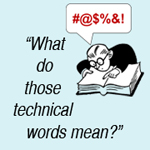
Digital Piano Technical Terms (Terminology)
Keyboard Action (Weighted Keys)
How the action of an acoustic piano is reproduced on a digital instrument.
Most manufacturers now incorporate a graded action, whereby the weighting of the keys becomes slightly heavier as you move from the top to the bottom of the keyboard. Many digital pianos now also feature imitation ebony/ivory effect to create a better surface feel to the keyboard.
Touch Sensitivity
Touch sensitivity is the system of volume change (and in most cases tonal change) depending on how hard the keys are played. Most digital pianos enable the touch sensitivity to be adjusted.
Pedals
Most digital pianos now have 3 pedals, as on an acoustic grand piano.
The right pedal is the damper (sustain pedal). This is also the pedal supplied if the digital piano only has one. The middle pedal is sostenuto, as featured on most grand pianos. The left pedal is called Una Corda (soft pedal) If the digital piano has 2 pedals they would be the damper and the soft pedal. Some digital pianos enable other functions to be operated from the sostenuto and soft pedals.
Half Pedaling
This is the ability to reproduce continuous variation of the damper pedal depending on how far it is pressed down, as on an acoustic piano. This gives the pianist far greater control. Some basic sustain pedals on lower priced digital pianos do not offer this facility.
Dynamic Steps
This is the number of steps of tonal change the manufacturer has recorded from an acoustic piano and stored digitally. This has increased as technology has improved.
Many digital pianos now have seamless dynamic tonal change, resulting in a far more realistic tone.
Polyphony
The maximum number of notes that can sound simultaneously, and this also includes any sustained notes. Using 2 sounds together will half the polyphony. If the digital piano has rhythms and accompaniments or a digital recording feature, these also ‘use up’ the polyphony. Most digital pianos are now 128 note polyphonic and a few are even more.
String Resonance
This is basic terms, is the sound you hear when playing a key on an acoustic piano causes other strings to resonate. As memory has increased on digital pianos, this has been incorporated into the sound, and can usually be adjusted.
Damper Resonance
Using the damper pedal causes strings to resonate on an acoustic piano, and this effect has now been incorporated on many digital pianos.
Voices/Sounds
This is the number of different sounds the instrument has. Voices is a term for the different sounds originally used on pipe organs and has found its way to electronic instruments.
Tone Generating Technology
This is the particular form of technology each manufacturer uses to reproduce the sound of an acoustic piano. Most digital pianos use sampling technology, where the actual sound of an acoustic piano is recorded in great detail and stored digitally.
LCD/LED Display
Many pianos have an LED or LCD display to provide information to the player.
This can include sound name, metronome speed and additional functions.
Metronome
An electronic simulation of a clockwork metronome used to keep time when practicing. As well as speed adjustment, many digital pianos have the option to adjust the tone and volume of the metronome.
Transpose
The transpose facility enables the piano to sound in a different key to the one you are playing. Ideal for accompanying a singer or playing with other instrumentalists.
Master Tuning
This allows for fine-tuning of the digital piano away from standard concert pitch.
This can be useful of the digital is being used with another acoustic instrument which is very slightly out of tune.
Sequencer/Digital Recording
This is a feature of the instrument which enables the player to record a performance digitally. Often a performance can be built up on different tracks and using different sounds should you wish. Because the performance is stored digitally, it can be played back at a different tempo or in a different key. Many digital pianos offer a storage facility to retain performances when the instrument is switched off. Some also offer the facility to transfer to USB drive.
Audio Recorder
Some digital pianos now have an inbuilt audio recording facility where a performance can be stored in .wav or mp3 format, depending on the instrument. This can be saved to USB and transferred to your computer.
Additional Sockets & Connections
Headphone
Headphone sockets are provided for silent practice. Usually there are two, so that one person can play and another can listen, or for silent duet playing.
On some digital pianos the headphone socket can be used as a line-out for connecting to additional amplification
USB
USB is often included to connect the instrument to a computer (additional software is required) This enables use of recording, arranging and notation software to be used.
This enables storage of songs and settings from the instrument, and easy transfer of data to a computer or other compatible pianos.
MIDI
M usical Instrument Digital Interface was the original way to connect to home computers before the days of USB. MIDI can also be used for connecting keyboards together and playing them from one main instrument.
Line-Out
Dedicated sockets for connecting to external amplification.
Aux/Line-In
Enables other products (such as an iPod) to be amplified through the internal amplification of the digital piano.








